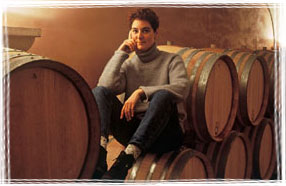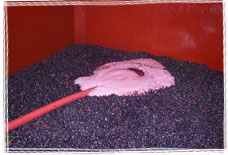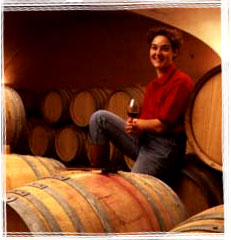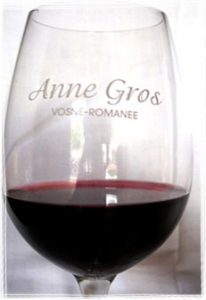Oenology
Œnological expression

About our philosophy : a respect for tradition and desire to innovate
Vinification : traditional vinification
Ageing : a celebration of terroir wines
Marketing : where to find our wines
Our philosophy
“The goal of the game is to obtain ripe and healthy grapes. I then strive to bring everything together while respecting the integrity of our grapes.”
This philosophy is in keeping with a respect for tradition and a desire to innovate. Respecting the biodiversity of the terroir allows us to produce wines that are subtle, harmonious and elegant with good stuffing, viscosity and fruit.
Vinification
 Vinification is traditional at the domaine. In lined cement tanks for the reds and stainless steel tanks for the whites.
The temperatures are controlled and adapted to the sanitary state of the raw
material and the type of vintage. Fermentation lasts 12 to 15 days.
The free-run juice and press juice are blended and settling lasts a minimum of 48 hours in order to eliminate the heavy lees.
Vinification is traditional at the domaine. In lined cement tanks for the reds and stainless steel tanks for the whites.
The temperatures are controlled and adapted to the sanitary state of the raw
material and the type of vintage. Fermentation lasts 12 to 15 days.
The free-run juice and press juice are blended and settling lasts a minimum of 48 hours in order to eliminate the heavy lees.
Barrel Ageing

At the domaine, barrel ageing takes place over approximately 16 months using a large percent of new oak: 80% for the grand crus, 50% for the village wines and 30% for the regional wines. This allows us to obtain a regular exchange of oxygen and wine as new wood is both a catalyst and a developer. It is what gives the wine aromatic complexity, weight and structure. Thanks to this alchemy, the expression of each different terroir in our wines is preserved and shown to its advantage.
Marketing
True to our philosophy, our wines are distributed by an agent with their own network covering France, Europe and the world so that you can enjoy the wealth of Burgundy’s terroir wherever you are.
60% of the wine is exported. 20% is reserved for cellarmasters and restaurants and 20% is sold directly to individual connoisseurs. Anne personally welcomes individual clients, professionals and journalists by appointment only.
The domaine can receive some tourists during their stay at my Guest House La Colombière and organize some tours in the vineyards and visits in the winery and cellars to illustrate the explainations of our works. The tasting in barrels are not possible to preserve the quality of the breading. Some tastings are organized with some wines selected in the Association Women and Wines from Burgundy.
For the moment, there is no possibility to include new customers and I selected for you the best wine shops in ” Where to find my wines”.
Small tasting lesson
The way the wine feels in the mouth, or rather its aptitude to stimulate the palate is the most interesting factor. These sensations enable us to better appreciate the complexity and unique characteristics of a wine : consistency, suppleness, viscosity, texture, vivacity, aromatic length and aptitude for ageing. This is the gourmet method of wine tasting.
Consistency : A “vin de terroir” * is always consistent. In each “terroir” worthy of its name, the grapes reach optimum physiological maturity and naturally produce consistent wines. It’s the substance of the wine, its structure, body and natural concentration. This consistency is a result of the vatting process (maceration before fermentation, fermentation, maceration after fermentation for red wines and fermentation and ageing of the juices on the lees for the whites). During this time, various substances are extracted from the grapes, in particular the tannins. If there is no consistency at the outset, the ageing process will not change anything ! Concentration through diverse modern techniques such as reversed osmosis, maceration of oak chips and the addition of manufactured substances can succeed in deluding the taster initially, but on airing and particularly on ageing, one discovers the absence of complexity in these “technically produced” wines.
Suppleness : The consistency of a “vin de terroir” must show suppleness on entering the mouth. Only after this, should one taste the astringency, natural in young red wines. The Larousse dictionary considers suppleness to be the consistency’s flexibility. To appreciate this characteristic, one should be able to mix the liquid without there being any sensation of hardness on the pallet. One good way of learning to recognise suppleness in the mouth is to bite in to an egg custard and then in to a soft-boiled egg. When pressure from the jaw is applied to the egg custard, the substance is crushed and disintegrates. This gives a soft sensation in the mouth. The sensation of the boiled egg however, is that similar to a mattress spring. That, is supplenes.
Viscosity : A great “vin de terroir” produces good viscosity in the mouth. This sensation is essential, as it reflects the quality of the tannins. Talented wine growers who respect their land limit their yields, never harvest their grapes for convenience purposes, but always at the optimum level of maturity. Furthermore, they carry out a harsh sorting of the grapes on arrival at the fermenting room. The study of this characteristic therefore depends on one’s perception of the tannin’s quality: round, full, fat, firm, hard… Tannin is naturally present in the grape skins and pips. In the mouth, it triggers salivary secretions. Good tannins always give a paradoxical sensation of astringency and oiliness. Great wines always leave the palate feeling slightly oily. First the tannin, then this great oily feeling which one associates with a high quality olive oil.
Texture : Shakespeare, who was undoubtedly initiated to wine by a professional, spoke of great French wines and Burgundy nectars, boasting their velvety, silky, delicate fruitiness. A “vin de terroir” must provide sensations in the mouth evoking silk, taffeta and velvet. Even very young wines from reputable vineyards boast an unmatched texture. Once the years have tamed the hotheaded youth in particularly exceptional vintages, the wines from Burgundy melt in the mouth blending their velvety texture with noble consistency, offering the most moving of taste sensations. The best way to learn how to appreciate texture is by feeling different types of material, for example, silk and hessian. In the mouth, textures can be compared by swallowing carrot grated with a course grater and then with a fine grater. It is the same carrot which produces two completely different taste sensations.
Vivacity : Vivaciousness owes itself to the wine’s natural acidity. Alcoholic fermentation followed by malo-lactic fermentation work subtle transformations that guarantee a racy vivacity, whilst shaping the consistency and sharpening the texture of the wine. This characteristic literally livens up the wine in the mouth. It also brings out the aromatic freshness of any great Burgundian climate. It is the winegrower’s ability to harvest at the optimum level of physiological maturity and not for convenience, which is the key. This obviously involves strict monitoring of yields as well as a ruthless sorting of the grapes to strike a perfect balance.
Aromatic persistency : A great “vin de terroir” has length in the mouth. It is not enough for a wine to be tannic and aromatic with a strong taste of wood, as is the case of some “manufactured” wines. The wine’s complexity must also be brought to the fore by its long presence in the mouth. The longer the wine, the longer the aromatic persistency. One talks of final taste in the mouth, of sap, particularly with white wines. Then we judge the intensity of the wine in the mouth before it fades. However, it is the analysis of this aromatic persistency which is most appreciated by the amateur! All the 1er and Grands Crus have great aromatic persistency.
Aptitude for ageing : A great “vin de terroir” is made to last and its complexity only falters really after a long ageing process, which varies according to the quality of the vintages. Exceptional vintages enable wine to keep for a century or longer. In good vintages, life expectancy is less great. In average vintages, it is worth tasting the wines within the first 10 years. It goes without saying that the most prestigious Grands Crus and 1er Crus have the greatest potential for ageing.
* “Vin de terroir” – Wine produced from grapes originating from a particular vineyard, from local soil
It is the terroir that gives a wine its typicty :
It is the terroir that imprints the wine with its mark, its typicity. It is the soul of a wine. Even though geological science, combine with biochemistry has proposed several undeniable assertions, luckily, a large part still remains a mystery.
Research aimed at explaining the influence of the subsoil on the sensory qualities of wine has enabled the formulation of several hypotheses on the role of certain chemical elements; manganese, magnesium and, in particular, potassium.
It is thought that calcium and active limestone are essential factors. It has been proposed that the weight, roundness and fullness of a wine depends on limestone, that clay favours the extraordinary and paradoxical alliance of strength and softness, that silica imparts power and strength and that iron develops the intensity of colour…
Our Recommendations

Contrary to any given ideas, goat cheese has never been the red wines’ ideal companion. Its sour milk goes really well with dry white wine.
The ideal serving temperature no longer has anything to do with the word “room” in an age of well heated homes. For reds, a temperature of 15°C seems ideal. If your dining room is hotter than 20°C, serve the wine slightly cool as the temperature rises very quickly in the glass. For white wines, 10-12°C seems perfect. Do not hesitate to put your bottle in the fridge for a few minutes if the temperature of your cellar is a bit higher.
Of course, the glass in which the wine is served is very important, the golden rule is to always use a glass with a stem so that it may be held without heating up the wine. An elegant shape is always welcome. Be careful of smells from the cupboard, cardboard boxes and dish towels…
It is preferable to choose the wine in advance so that the bottle may remain standing up in your cellar for a few hours, any sediment will settle on its own. It is rarely necessary to decant our wines, except for those vintages which you absolutely want to open before they have reach their prime.
